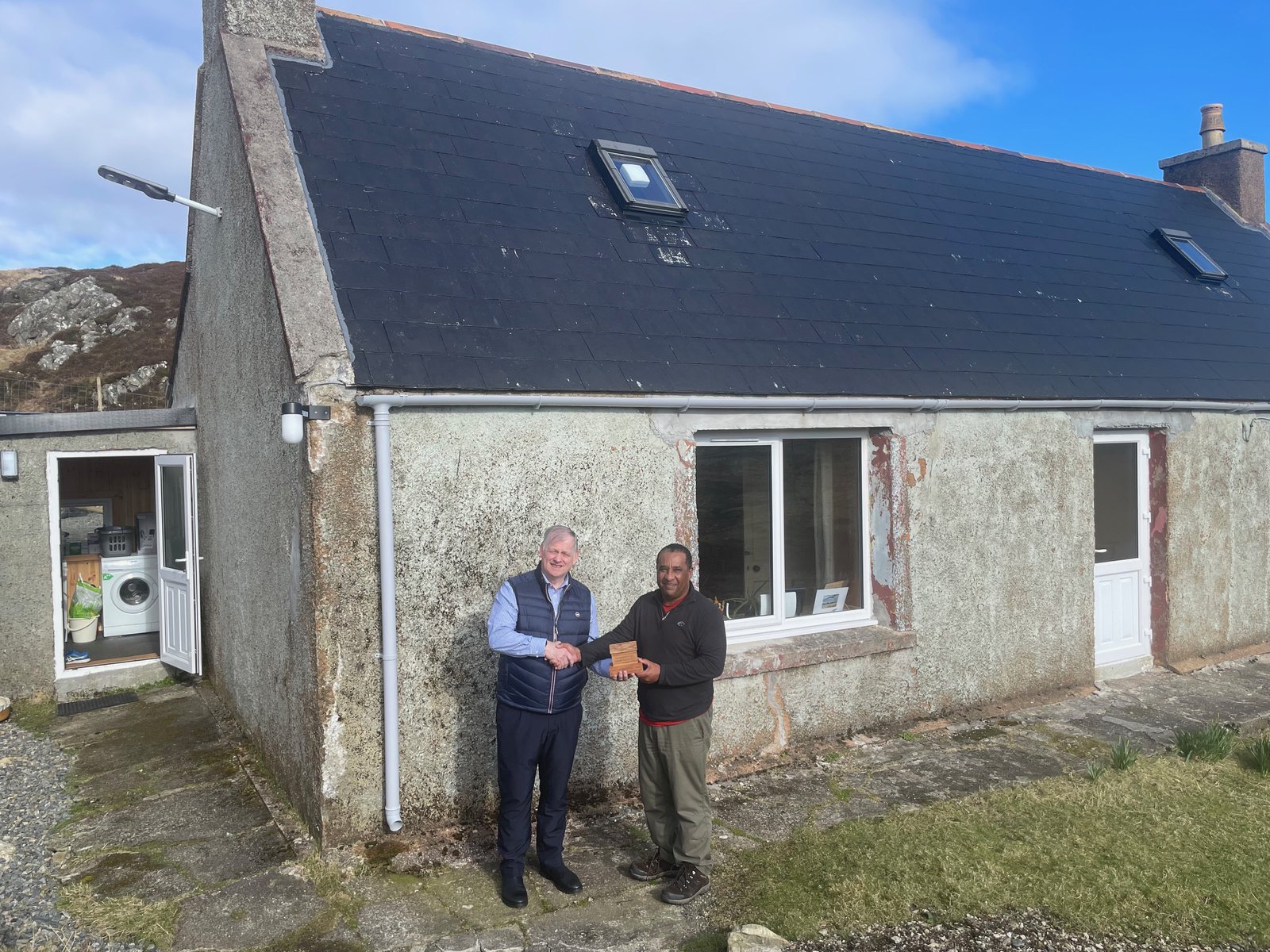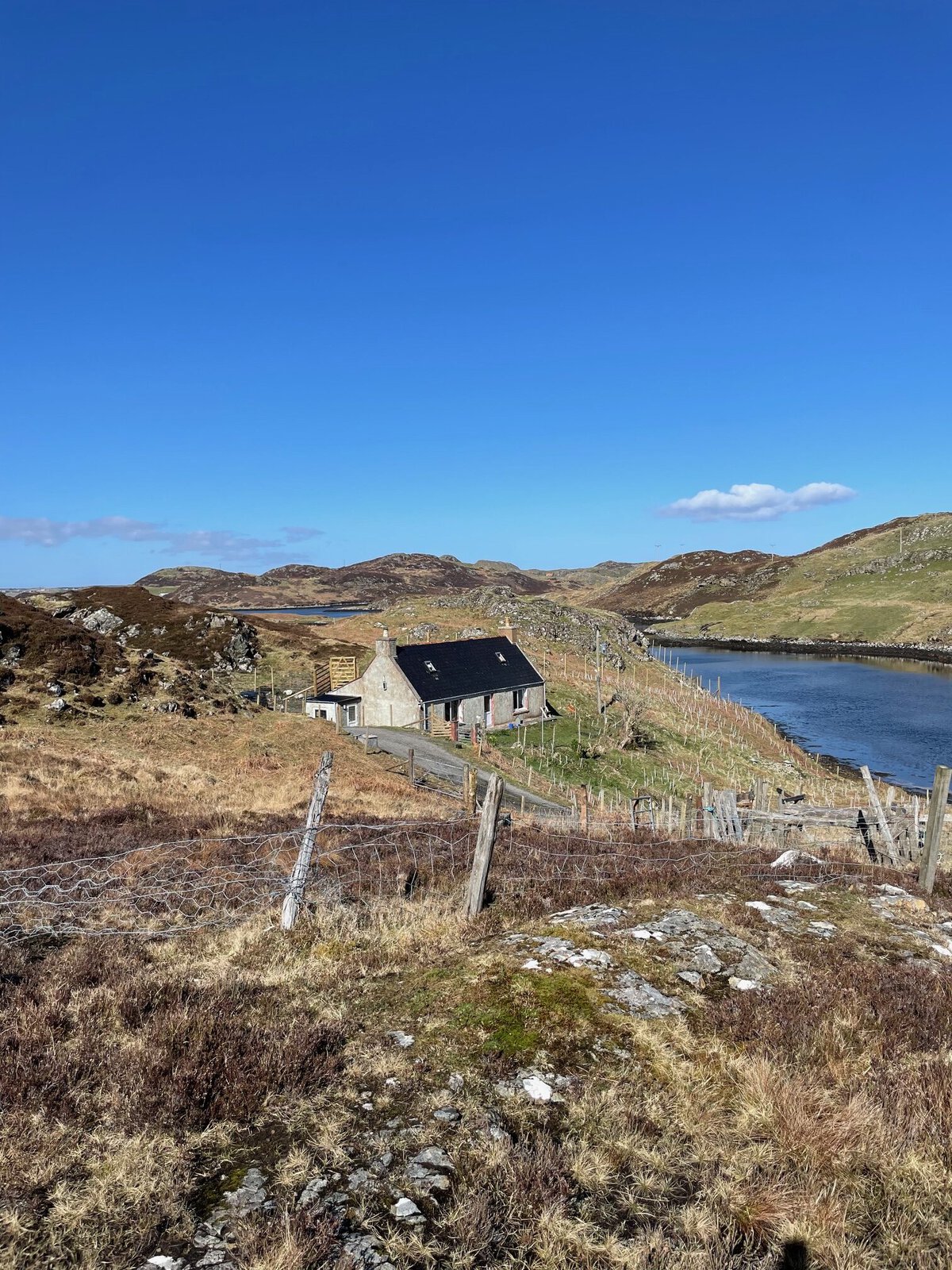An abandoned fisherman’s cottage on a remote Scottish island that had no running water, electricity or windows — and sheep living in it. That was all ex-soldier and businessman Robert Tai could afford after a long and difficult divorce left him close to broke.
He had become enchanted by the historic stone buildings that stand empty all across the windswept, rainy Isle of Lewis back when he was visiting yearly with his then-wife in the 2000s, so it seemed a natural place to seek refuge after their marriage broke down.
Tai was intent on purchasing and renovating a dilapidated property he’d initially spotted in 2004. In 2021, he managed to track down and negotiate a sale with the owners, who had been planning to demolish the four-bedroom building and replace it with a new structure. So began the next chapter of his life.
“I really wanted to set myself up again, and this was the only way I could get back on my feet,” says Tai.
Through the Scottish Empty Homes Partnership (SEHP) — a collaboration between the Scottish Government and UK housing and homelessness charity Shelter — Tai was able to qualify for a tax reimbursement on the materials he purchased to restore the cottage to a livable state. He claimed back £12,000 (about $15,900 US) of the £75,000 he’d spent completely overhauling the property.
Tai had never done professional building work before, but he reinstated electricity and water, replaced the beams, ripped out carpets encrusted with sheep droppings, removed a damaged chimney, repaired the roof, knocked down walls to expand the kitchen and bathroom, and updated the decor.
Professionals helped install new windows, and Tai took advice from a local builder friend. On the 17 acres of surrounding farmland, where Tai has replaced fences and gates, he has planted 7,000 trees and plans to plant another 3,000. He has also built a polytunnel for growing vegetables.
“I started this project aged 63 and this was my first property renovation. I’m now 66 and think this is a good example of what can be achieved,” says Tai.
Tai’s abandoned cottage was one of 688 that sit empty across Scotland’s remote Western Isles, and 46,217 empty properties across all of Scotland. But the SEHP is working to change that: It has brought 1,875 empty properties back into use across the country over the past year, and a total of 10,889 since the initiative began in 2010.

Twenty-nine of Scotland’s 32 local authorities now have an Empty Homes program, through which officers try to track down the owners of properties that they’ve identified that could be restored, or that the public has reported. Empty Homes officers help property owners apply for grants and rebates, share materials and services discounts, and staff an advice line.
The SEHP’s support for property owners looking to complete, and even start, renovations, is crucial, considering that the majority of Scotland’s empty homes got that way because of owners intending, but failing, to renovate, according to SEHP’s latest impact report. Other reasons include owners being hospitalized, dying or moving away, or homes becoming repossessed.

While the Scottish government has set out to create 110,000 affordable new homes by 2032, the SEHP’s national manager, Tahmina Nizam, is confident that the program’s work can help ease some of the pressure, as restoring an empty property can be cheaper and faster than building new. Its next phase, she says, is to help local authorities be more proactive and strategic about identifying and rehoming empty properties.
“Using empty homes won’t be the sole response (to Scotland’s housing shortage), but it could be a key response that means there’s less pressure on just relying on new buildings, especially at a time when local authorities and the Scottish government are facing financial difficulty and are having to make challenging decisions,” says Nizam.
Having an Empty Homes strategy and service in place can help local authorities plan more long-term, Nizam adds. It can help them understand why properties remain empty for extended periods and what they can do about it.
Applications for social housing in Scotland increased by five percent between 2022 and 2023, while nearly 130,000 people are on social housing waiting lists. Encouragingly, around 19 percent of the empty homes brought back into use over the past year have been converted to affordable housing, either through a local authority or housing association management scheme or privately.
SEHP is now working directly with organizations like South of Scotland Community Housing to convert empty homes and buildings into affordable housing. It has also set up a project to help tackle the shortage of affordable accommodation for health and social care workers who need to relocate for their jobs.

Like Robert Tai’s home on the Isle of Lewis, around 29 percent of abandoned properties that come through the SEHP become owner-occupied — something Nizam still counts as a win as it counteracts the negative impact empty homes have on their surrounding communities. For example, empty homes can become a hub for vandalism and even drug use.
“Someone living in a property is what we want. It means you’ve got someone who’s contributing to the local economy, and becoming part of the fabric of that community. In rural areas, the impact even one empty property can have on a small village is not to be understated,” says Nazim.
Also on the Isle of Lewis, the SEHP helped Karis and David Beattie secure a £38,000 grant to renovate the traditional farmhouse they’d bought in 2022. Built in 1914, it had been empty since the 1940s. They’ve since turned it into their dream home — and have sparked a trend, attracting seven new residents to the village.

“The thing that everybody says is that they just can’t wait to see a light back on in that house. People are excited and commenting on the changes that they are seeing day to day. If you have a vision and a passion for this kind of project then see it through, it’s really rewarding to see these buildings brought back into use,” Karis Beattie told the SEHP.
Meanwhile, Robert Tai feels his renovation is “95 percent finished.” He officially moved into the cottage with his new partner a year ago but is still “doing bits and pieces.” After the exhaustion of working around the clock for a whole year, and being set back by a storm that flooded the house, Tai is now in a good place.
“It’s the most beautiful spot by the sea — just really rugged beauty. The property is very remote. The nearest neighbors are about a mile away — I can’t even see their house,” says Tai.
“It’s really calming and relaxing. You either like it, or you don’t. And I love it.”
The post Turning the Lights Back on in Scotland’s Empty Homes appeared first on Reasons to be Cheerful.




